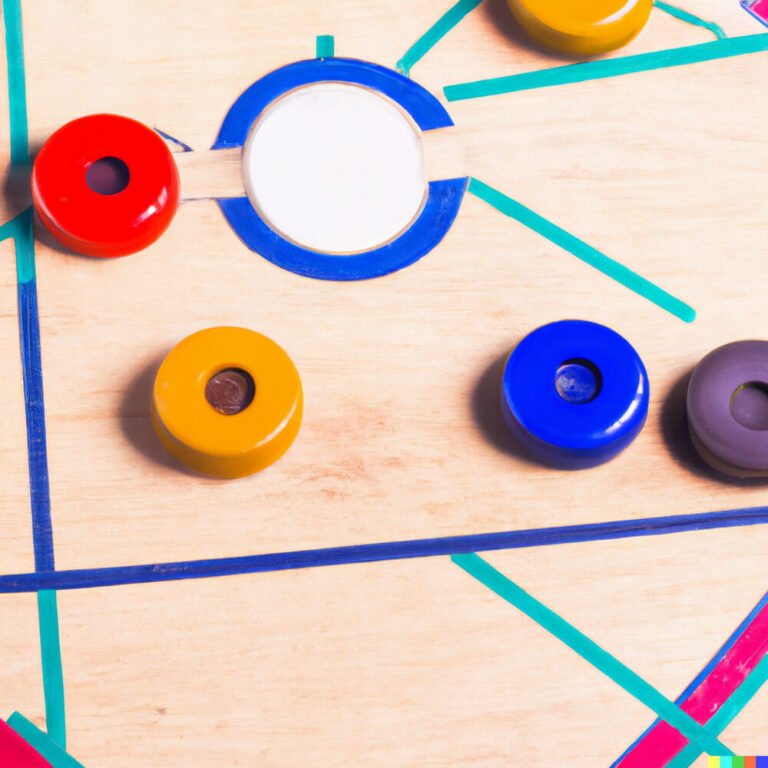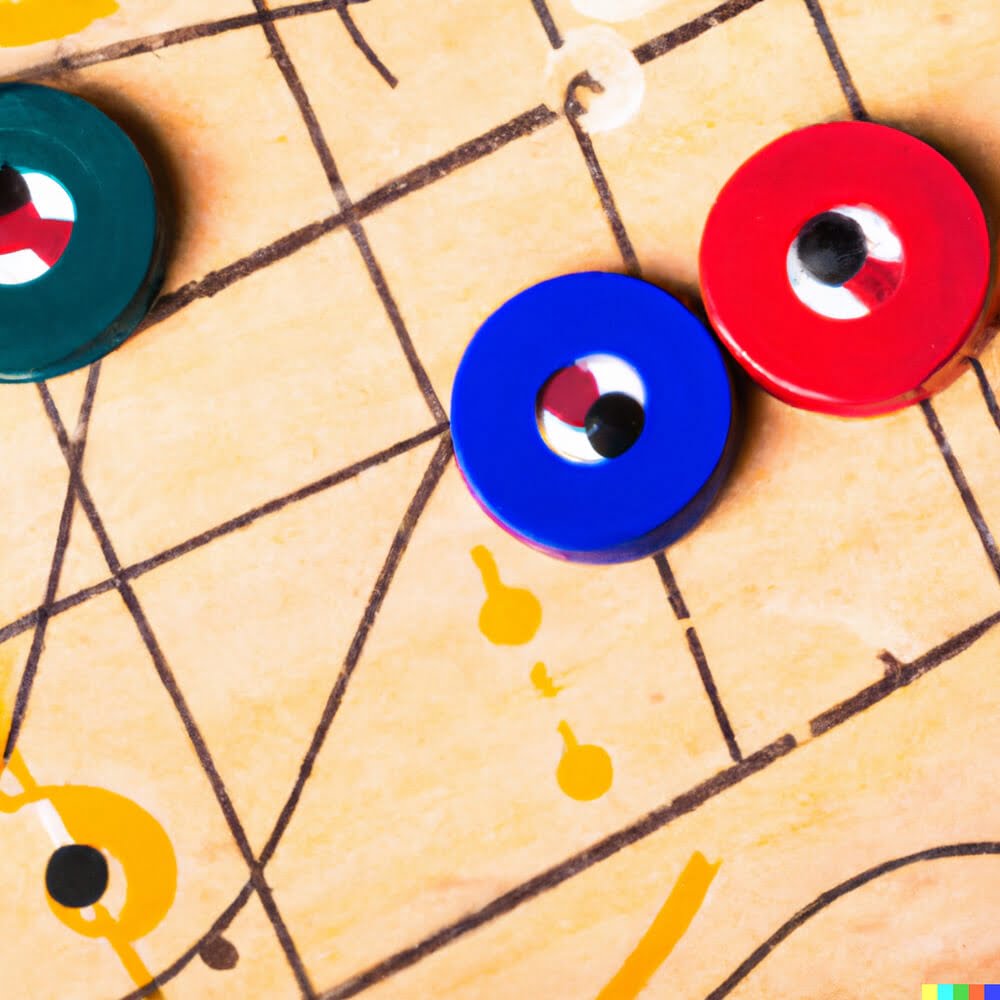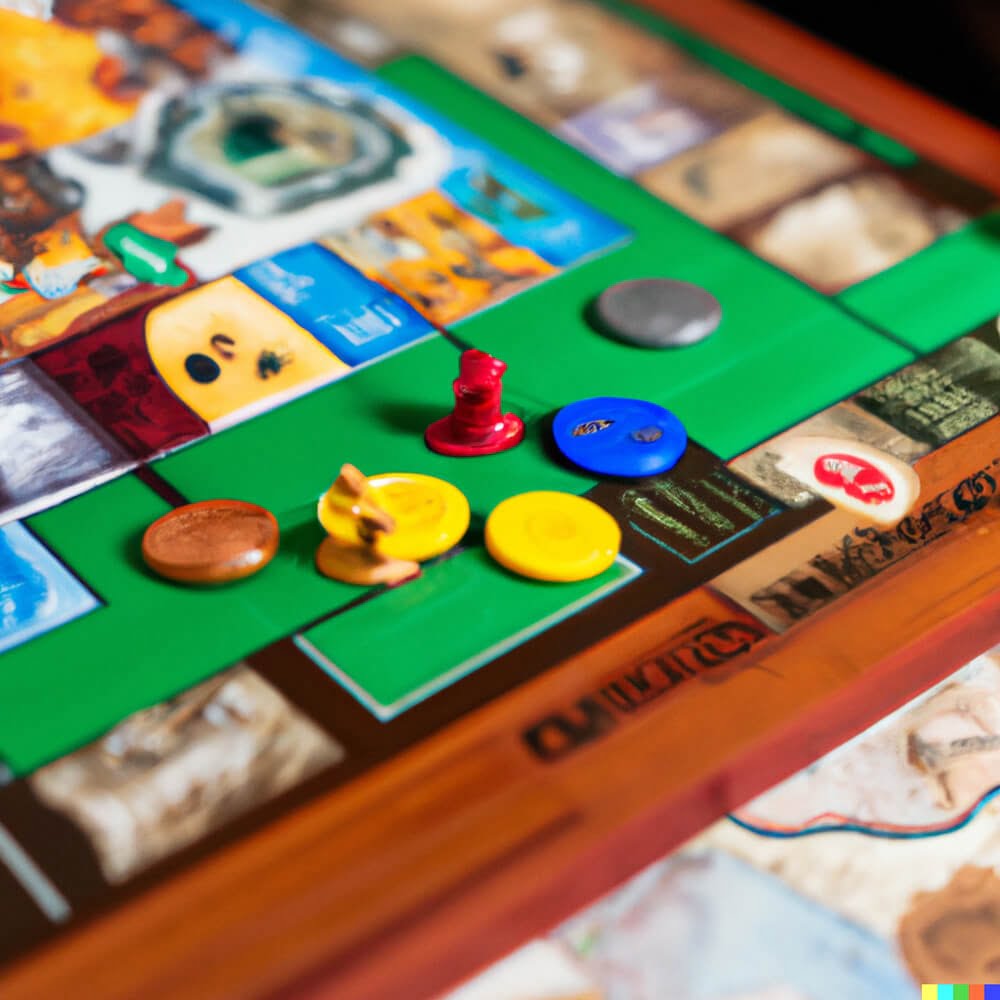A classic labyrinth game board is a timeless and captivating toy that has provided endless hours of entertainment for people of all ages. This intricate and challenging tabletop game has been enjoyed by generations, with its roots tracing back several centuries.
In this article, we will take a closer look at what exactly a classic labyrinth game board is, its history, the art of designing these boards, their features and components, how to play the game step-by-step, tips and strategies for mastering it, the benefits of playing, its educational value for kids, as well as how to maintain and preserve your beloved game board.
The concept of a labyrinth dates back to ancient civilizations like Egypt and Greece. Labyrinths were often used symbolically in religious practices or as tools for meditation. But the modern version of the classic labyrinth game board emerged in the late 19th century when wooden toy companies started producing them on a larger scale. These early versions required players to navigate a small steel ball through an intricate maze by tilting the board in different directions.
Today’s classic labyrinth game boards are designed with sleeker materials and enhanced features while still retaining the essence of their predecessors. The main objective remains unchanged – guide the metal ball from start to finish by skillfully manipulating the angles of the board without letting it fall into any holes or traps along the way.
Intriguing and challenging in nature, classic labyrinth game boards have become popular not only as delightful pastime activities but also as tools for developing mental and physical skills. With its ability to promote concentration, hand-eye coordination, strategic thinking, and problem-solving abilities in players young and old alike, it is no wonder that this age-old toy continues to captivate enthusiasts from around the world.
So let us dive deeper into the history, design process, gameplay mechanics, benefits, educational aspects, maintenance tips, and much more that make up this fascinating Classic Labyrinth Game Board journey.
History of Classic Labyrinth Game Boards
The history of classic labyrinth game boards is a fascinating journey that takes us back in time to the origins of this beloved game. Labyrinth games have been around for centuries, with their roots traced back to ancient civilizations. These early versions were often carved into stone or wood, showcasing intricate designs and patterns.
One of the earliest recorded instances of a labyrinth-like game can be found in ancient Egypt, where a game called “Senet” was played. Although not exactly the same as modern-day labyrinths, it had a similar concept of navigating through a series of paths and obstacles. The popularity of labyrinth games spread across different cultures and regions over time.
In the late 19th century, a British engineer named Robert Friese created what is considered the first commercially-produced labyrinth game board. He cleverly combined elements from earlier versions and introduced new features that enhanced gameplay. This innovative design laid the foundation for future iterations of classic labyrinth game boards.
As time went on, advancements in technology allowed for more intricate and challenging designs on these game boards. The introduction of plastic molds and precision cutting techniques made it possible to create highly detailed mazes that required skill, dexterity, and strategy to solve. Today, classic labyrinth game boards come in various sizes and themes, providing endless hours of entertainment for players of all ages.
Whether you are an avid collector or simply enjoy playing these games with friends and family, exploring the history of classic labyrinth game boards allows us to appreciate their rich heritage. These timeless treasures continue to capture our imagination and provide us with hours of fun as we navigate through their twisting paths and elusive objectives.
The Art of Designing Classic Labyrinth Game Boards
Designing a classic labyrinth game board is a creative process that involves careful planning and execution. From the initial concept to the final creation, each step contributes to making the game board a challenging and visually appealing experience for players of all ages. In this section, we will explore the art of designing classic labyrinth game boards, providing insight into the thought process and techniques used to bring these captivating games to life.
Brainstorming and Concept Development
The first step in designing a classic labyrinth game board is brainstorming ideas and developing a concept. This involves considering various factors such as the size and shape of the board, the number of paths and obstacles, and any additional features or special elements that will enhance gameplay. The goal is to create a balance between difficulty and playability, ensuring that players are engaged without becoming frustrated.
Creating the Layout and Pathways
Once the concept has been established, it’s time to create the layout of the labyrinth game board. This step involves sketching out a grid or framework on paper or using digital design software. The pathways can be designed in different patterns, such as a traditional maze design or a more intricate network of interconnected paths. The placement of walls, barriers, and traps should be carefully considered to provide an enjoyable challenge for players.
Adding Visual Elements and Themes
To make the classic labyrinth game board visually appealing, designers often add decorative elements or themes that enhance the overall experience. This could include illustrations of landscapes, animals, characters, or symbols related to a specific theme or setting. The use of vibrant colors can also contribute to creating an attractive and eye-catching game board.
By paying attention to every detail in these steps – from brainstorming ideas to creating pathways and adding visual elements – designers can successfully bring their concepts for classic labyrinth game boards to life. With careful planning and creativity, they can create game boards that offer engaging and challenging experiences for players of all ages.
Features and Components of a Classic Labyrinth Game Board
Board Design
One of the key features of a classic labyrinth game board is its intricate and carefully designed maze. The board typically consists of a series of pathways, walls, traps, and holes through which players must navigate a small metal ball or marble. The design varies from board to board, with some featuring simple and straightforward mazes while others incorporate more complex and challenging layouts.
Materials
Classic labyrinth game boards are often crafted from high-quality materials that ensure durability and longevity. Most commonly, the maze is engraved or painted onto a wooden platform or board. The use of wood not only adds a touch of elegance but also provides stability and resistance to wear and tear. Some modern versions also incorporate plastic components to enhance the gameplay experience.
Marble/Ball
The marble or metal ball used in a classic labyrinth game board is an essential component that adds excitement to the gameplay. It is usually made from steel or glass for its smoothness and ability to roll easily across the maze. The size and weight of the ball can vary depending on personal preferences or specific game rules.
Movement Mechanism
Most classic labyrinth game boards feature a tilting mechanism that allows players to manipulate the maze by tilting the entire board in different directions. This movement causes the ball inside the maze to roll along the pathways, responding to gravity as it navigates through various obstacles. The precision required in controlling the movement adds an element of challenge and skill to the gameplay.
Add-Ons/Extensions
In addition to these core components, many classic labyrinth game boards come with additional features such as interchangeable mazes, customizable walls, or multiple levels of difficulty. These add-ons provide opportunities for players to personalize their gaming experience and increase replay value.
With their carefully crafted design, high-quality materials, responsive control mechanisms, and optional add-ons, classic labyrinth game boards offer a captivating and gratifying gaming experience for players of all ages.
How to Play
Playing a classic labyrinth game board can be a fun and challenging experience. In this section, we will guide beginners through the step-by-step process of playing the game.
1. Set Up the Game Board: Start by placing the maze tiles on the designated spaces on the game board. Each player should choose a colored marble and place it at the starting position indicated on the board.
2. Taking Turns: The game is played in turns, starting with the youngest player. On each turn, players must tilt or rotate the game board to control their marble’s movement through the maze. The objective is to navigate the marble through various obstacles and reach the goal, which is usually located in a different area of the board.
3. Move Strategically: As you tilt or rotate the game board, gravity causes your marble to move accordingly. Beginners should start by making small adjustments until they get used to controlling their marble’s movements. It’s important to anticipate how tilting or rotating will affect your marble’s path and adjust your movements accordingly.
4. Hitting Obstacles: Throughout the maze, players will encounter various obstacles such as holes or traps. If your marble falls into one of these obstacles, you will have to start over from your last position. This adds an element of challenge and requires precision and skill to avoid these pitfalls.
5. Reaching the Goal: The ultimate objective is to successfully maneuver your marble through the maze and reach the goal as quickly as possible. The first player who reaches the goal wins. However, keep in mind that if multiple marbles reach the goal simultaneously, tie-breaker rules may apply.
Playing a classic labyrinth game board can be both exciting and frustrating at times, but with practice and strategy, you’ll improve over time. Remember, patience and careful movements are key to mastering this timeless game.
| Step | Description |
|---|---|
| 1 | Set up the game board by placing the maze tiles and each player’s marble in their starting positions. |
| 2 | Take turns tilting or rotating the game board to control your marble’s movement through the maze. |
| 3 | Navigate your marble through obstacles, avoiding holes or traps, and work towards reaching the goal. |
Tips and Strategies for Mastering the Classic Labyrinth Game Board
Mastering the classic labyrinth game board requires a combination of skill, patience, and strategic thinking. Whether you are a beginner or an experienced player looking to improve your skills, here are some tips and strategies to help you navigate the labyrinth and reach your goal with ease.
1. Start by Understanding the Physics: One of the key elements in mastering the classic labyrinth game board is understanding the physics behind it. The game board consists of a maze with holes that you must maneuver through by tilting the board. Familiarize yourself with how the ball moves in response to your movements and learn how to control its speed and direction.
2. Practice Makes Perfect: Like any other skill, practice is essential for mastering the classic labyrinth game board. Start with easier levels and gradually work your way up to more challenging ones. As you practice, you will develop a better feel for how much to tilt the board to guide the ball accurately.
3. Plan Your Moves Ahead: Before making any move, take a moment to assess the current situation on the game board. Look for potential obstacles or dead ends that could impede your progress. Develop a strategy for reaching your target as efficiently as possible by planning your moves ahead.
| Tips | Strategies |
|---|---|
| Start by understanding the physics. | Practice makes perfect. |
| Plan your moves ahead. | Take breaks when needed. |
Remember, patience is key when playing the classic labyrinth game board. Avoid rushing through levels and take your time to carefully tilt and maneuver the board. With perseverance and these tips and strategies, you’ll soon become an expert at mastering the classic labyrinth game board.
Benefits of Playing Classic Labyrinth Game Board
Playing the classic labyrinth game board offers numerous benefits for both mental and physical skills. This timeless game can provide a fun and challenging experience while also improving various aspects of cognitive and physical abilities.
One of the main mental benefits of playing the classic labyrinth game board is the development of problem-solving skills. As players navigate the maze, they are constantly faced with obstacles and challenges that require strategic thinking and planning. They must analyze the maze layout, anticipate potential traps, and make quick decisions in order to reach their goal. This enhances their ability to think critically, make logical deductions, and come up with effective solutions to problems.
Furthermore, playing the classic labyrinth game board can improve hand-eye coordination and fine motor skills. The game requires precise movements as players use the knobs or tilt the board to guide the metal ball through the maze without falling into any holes or getting stuck in dead ends. This helps develop dexterity, agility, and better control over small muscle movements. It also helps improve spatial awareness and coordination between visual cues and physical actions.
Moreover, playing the classic labyrinth game board can enhance concentration and focus. The intricate design of the maze demands full attention from players as they maneuver through narrow passages and avoid obstacles. This requires them to block out distractions, maintain a steady hand, and concentrate on their movements without losing track of their overall objective. Developing these skills can have a positive impact on other areas of life that require sustained attention and focused effort.
Overall, engaging in play with a classic labyrinth game board not only provides entertainment but also offers numerous mental benefits such as improved problem-solving abilities, enhanced hand-eye coordination, fine motor skills development, increased concentration, and heightened focus. Whether played by children or adults, this stimulating activity serves as an enjoyable way to sharpen cognitive function while providing a fun challenge for individuals of all ages.
Classic Labyrinth Game Board for Kids
The Classic Labyrinth Game Board is not only a fun pastime for kids, but it also provides them with valuable educational benefits. This game board requires players to use their problem-solving skills, hand-eye coordination, and focus to navigate the maze and reach their goal. It presents a unique challenge that engages children mentally and helps develop important cognitive skills.
One of the educational advantages of the Classic Labyrinth Game Board is its ability to enhance problem-solving skills. As kids maneuver the steel ball through the maze, they encounter obstacles and dead ends that require them to think critically and find alternative routes. This process encourages them to analyze different options, make decisions, and solve problems in real-time. The more they play, the better they become at assessing situations and devising strategies to overcome challenges.
Furthermore, playing with a Classic Labyrinth Game Board improves hand-eye coordination in children. As they tilt the game board to control the movements of the ball, they must synchronize their hand movements with what they see on the board. This helps them develop better coordination between their eyes and hands, which is essential for performing various tasks throughout their daily lives.
In addition to its educational benefits, the Classic Labyrinth Game Board offers hours of entertainment for kids. The thrill of maneuvering through a maze creates excitement and anticipation as children strive to beat their previous records or compete with friends. The game’s challenging yet enjoyable nature keeps kids engaged for extended periods without even realizing how much time has passed.
Overall, the Classic Labyrinth Game Board provides a perfect balance between education and entertainment for children. While improving problem-solving skills and hand-eye coordination, it offers an enjoyable experience that keeps kids entertained for hours on end. By including this game board in your child’s playtime activities, you can contribute positively to their cognitive development while providing them with loads of fun.
Maintaining and Preserving Your Classic Labyrinth Game Board
A classic labyrinth game board is not only a fun and entertaining game to play, but it can also be considered as a work of art. Whether you own a vintage wooden labyrinth board or a modern plastic version, taking care of your game board is essential to ensure its longevity and usability. In this section, we will explore some dos and don’ts when it comes to maintaining and preserving your classic labyrinth game board.
Firstly, one of the most important dos in maintaining your classic labyrinth game board is to keep it clean. Regular cleaning is necessary to remove any dirt, dust, or debris that may accumulate on the surface or within the grooves of the maze.
The best way to clean your board is by using a soft cloth or brush to gently wipe away any particles. Avoid using harsh chemicals or abrasive materials as they may damage the finish or paint on the board.
In addition to regular cleaning, it is also advisable to store your classic labyrinth game board in a safe and dry place when not in use. Moisture can warp or damage the wood, so make sure to keep it away from humid areas such as basements or bathrooms. It is recommended to store the board flat or upright against a wall to prevent any bending or twisting.
Now let’s move on to some don’ts when it comes to maintaining your classic labyrinth game board. Firstly, avoid exposing your game board to direct sunlight for prolonged periods as this can cause the colors on the board to fade over time. Sunlight can also speed up the aging process of wooden boards, leading them to become brittle and more susceptible to cracks.
Another important don’t is placing heavy objects on top of your classic labyrinth game board. This can lead to unnecessary pressure on the surface and potentially result in warping or cracking of the wood. It’s best practice not to stack anything on top of your game board to prevent any accidents or damage.
By following these dos and don’ts, you can ensure that your classic labyrinth game board stays in pristine condition for years to come. Taking care of your board not only preserves its beauty but also enhances your gaming experience every time you play.
Conclusion
In conclusion, the classic labyrinth game board has stood the test of time for several reasons. First and foremost, its simple yet engaging gameplay continues to captivate players of all ages. Whether you are a child or an adult, navigating the maze using the knobs or tilting the board with precision provides a satisfying challenge that keeps players coming back for more.
Additionally, the timeless appeal of classic labyrinth game boards lies in their nostalgic value. For many, these games hold cherished memories of family game nights or friendly competitions with friends. The click-clack sound of the metal ball rolling around the maze and the excitement of successfully maneuvering through obstacles evoke a sense of joy and camaraderie that is unmatched by modern electronic games.
Furthermore, classic labyrinth game boards offer numerous benefits beyond mere entertainment. They sharpen mental skills such as problem-solving, critical thinking, and spatial awareness. Additionally, since playing requires fine motor control and coordination, they can also help improve physical dexterity. These dual benefits make them an excellent choice for individuals looking to enhance their cognitive abilities while having fun.
Frequently Asked Questions
How Old Is Labyrinth Board Game?
The Labyrinth board game was first published in 1986, making it over three decades old. It was designed by Max J. Kobbert and has since become a classic in the world of board games. Over the years, it has gained popularity and has been enjoyed by both children and adults alike.
What Are the Different Versions of the Labyrinth Board Game?
There are several different versions of the Labyrinth board game that have been released over the years. In addition to the original version, there is also an electronic version called “Labyrinth: The Duel,” which adds a new twist to gameplay by incorporating lights and sounds.
Other variations include themed editions such as a Harry Potter edition or a Star Wars edition, which feature characters and elements from those respective franchises.
How Long Does It Take to Play Labyrinth Board Game?
The length of time it takes to play the Labyrinth board game can vary depending on factors such as the number of players and their familiarity with the game. On average, a game of Labyrinth usually takes around 20-30 minutes to complete.
However, more experienced players may be able to finish a game more quickly, while newcomers may take longer as they familiarize themselves with the rules and mechanics of the game. Despite its relatively short duration, Labyrinth provides ample entertainment and strategic challenges, making it a fan-favorite among board game enthusiasts of all ages.

I love playing all kinds of games – from classics like Monopoly to modern favourites like Ticket to Ride.
I created this blog as a way to share my love of board games with others, and provide information on the latest releases and news in the industry.





